Library
- First you have to find you Kindle serial number.
- Then you can follow this instructions to instal the DeDRM_tools plugin
I'm delighted with my library in an Obsidian Bases table
There are some posts on my blog about books I’ve read, and, of course, their notes in Obsidian are categorized with properties, making it pretty easy to create a super-cool Bases table. The one below is one of the views of my Blog.base file, created by filtering notes with the type:Blog and tag:Books properties.
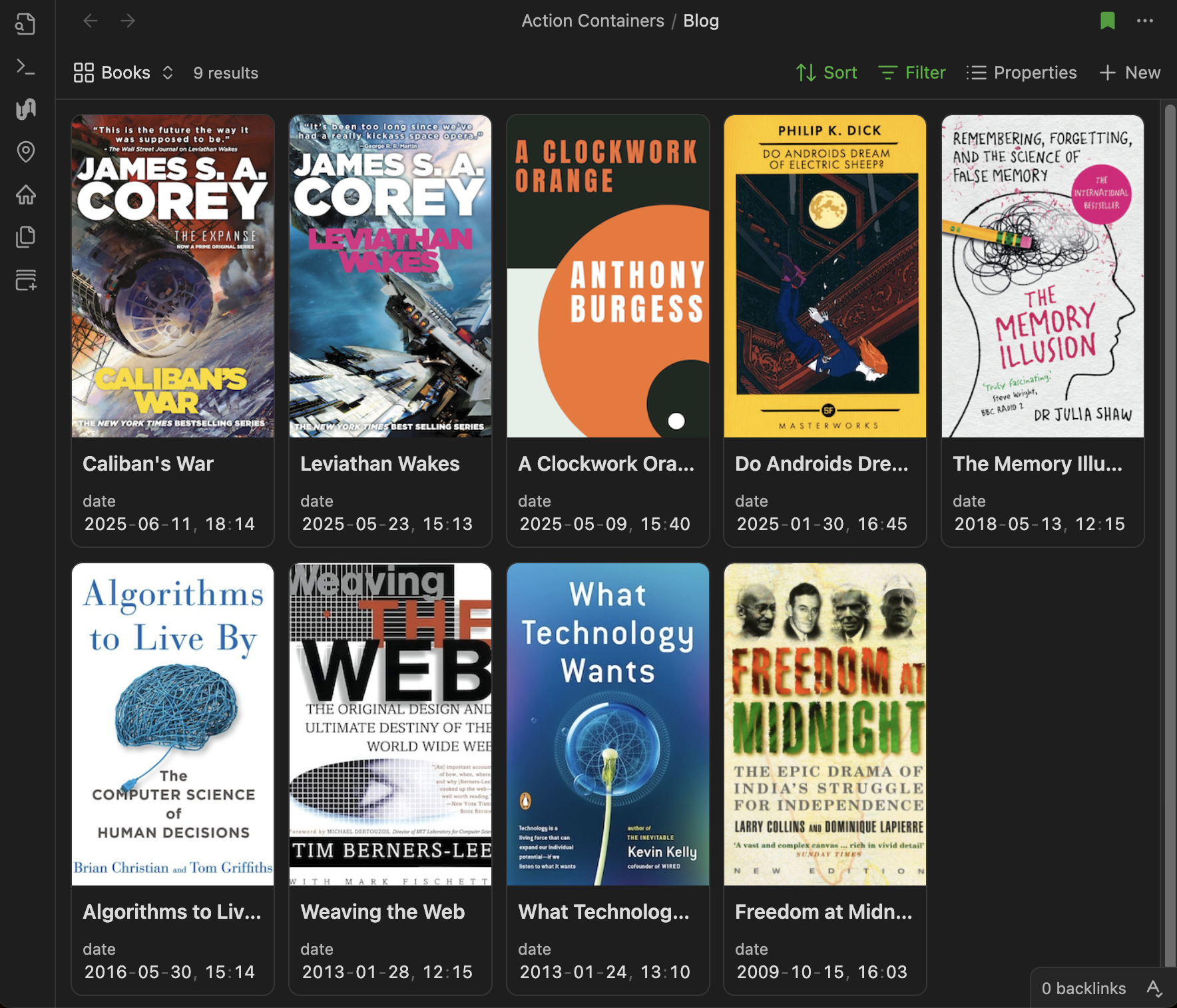
I enjoyed this aesthetic so much that I created a similar view for the Library page on my website. Of course, they are organized in reverse chronological order, and even with only nine books, it’s easy to see how my reading choices changed in 2025.
I remember saying to many friends and family members a few times that I needed a pause from the real world, as it is too crazy to bear. Maybe that’s why I’m reading a lot of fiction this year.
Anyway, because this represents just a tiny fraction of the books I’ve already read, I can’t stop thinking about how cool it would be to have my entire collection displayed like this.
Returning to a beloved book universe.
The last time I was so deeply involved with a universe, a book universe, was when I was reading my favorite author to this day, Fernando Sabino.
He would repeat sentences, ideas, and situations across all these completely unrelated stories and books, so I always thought he was talking about his life, but with a little touch of fiction. One could say that there was a universe—the author’s life universe—a parallel world with countless things that readers could relate to and understand.
This was many, many years ago. Decades ago. I read several other authors after finishing all his books, but none of them were able to create the same type of connection.
I’m currently on book two of The Expanse series. About 70 percent of that book, and I can’t wait to read book three. By the way, are there six or nine books? Anyway, what I know is there’s an end to the saga, and I’m already sad about that.
What am I supposed to do when I read all the books?
I freed my Kindle library and have it synchronized with all my devices
First, I converted the books to ePub using Calibre. Next, they joined my Timeline System in Obsidian for automatic synchronization across all devices, Supernote included.
Like many other modern conveniences, the Kindle ecosystem is built to keep us locked in. As you know, I’ve been taking down walls around digital goods I won, and now it’s time to do it with my books. This project has been on my list for a long time, but it was a recent feature removal from Amazon that motivated me to finally pull the trigger.
We used to be able to go to Amazon.com and download our Kindle books, but that’s not possible anymore. A while ago, when Amazon announced the policy change, I downloaded all my books. If you haven’t done that, I believe you can still have access to them by connecting your Kindle to a computer and manually coping the books.
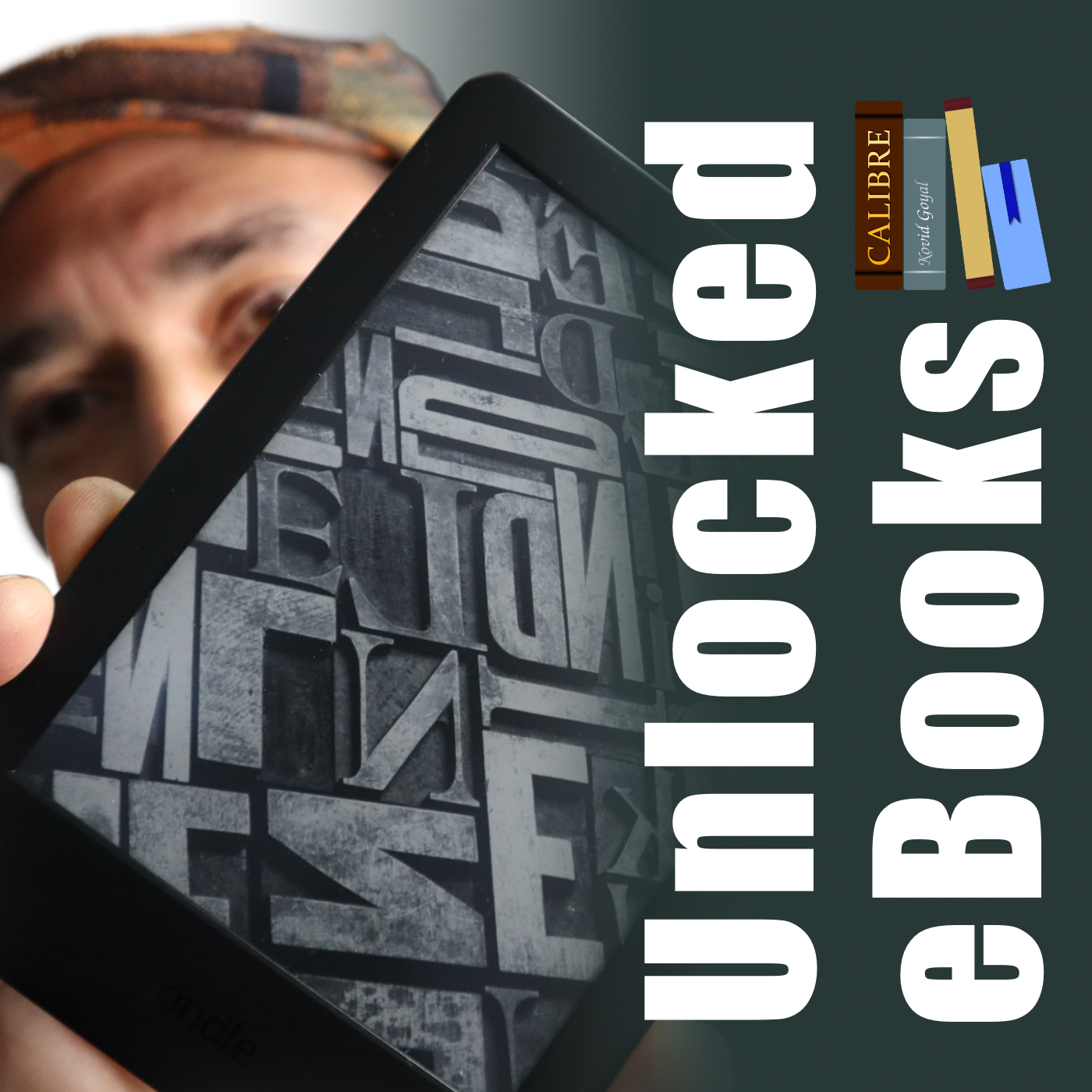
But having the books is just part of the process, as the majority of them are linked to your account via what’s called DRM. Additionally, Amazon uses a proprietary format instead of ePub, which is more widely adopted by e-book readers. In other words, it’s like having your books locked in a box that is locked in another box.
Calibre is the master key that can help us with all of these locks. Additionally, it works as a library management software, keeping all the books in a folder on our computer. That’s just perfect for the Digital Caveman project, right?
When you are first installing the app, it will suggest a folder for your library, but you can change it to what better suits you. In my case, I created a new Static Container (folder) called ‘eBooks’. And because the files in my Timeline System structure synchronize with multiple devices, my library is now widely available. But I’m getting ahead of myself.
As a tip, you can also move the library to a different folder in the future. Just click on the ‘eBooks’ button on the toolbar to choose a new location.

Next, we need to prepare Calibre to be able to remove the DRM from our books. This is done in two parts. First, we need to install and set up a plugin. It’s only after doing this that we’ll be able to tell Calibre to remove the DRM and convert the books to ePub.
Preparing Calibre
Add the serial number to the box and that’s it.
Converting to ePub
With all the above done, go to Calibre’s main window and click on the ‘Add books’ buttons. Select one or more books, and they will be added to your library’s folder.
Next, select one or more books in the list and click on the ‘Convert books’ option. You’ll see a new window with countless details that you can tweak on each book. There are even several formats available in addition to ePub, which is the pre-selected on. In my case, I kept everything as it was and clicked on the button to convert.
The Supernote
To understand how my books are being automatically sent to my Supernote, I suggest watching the video below.
But remember, the books are in my Obsidian Vault. And looking at how Calibre creates folders for each author, I’m already having insights about making those folders somehow connected to other content I have in Obsidian. Especially the ‘Knowledge Base’ notes, which share a strong relationship with the books I read. And that’s one of the reasons I chose to set the ‘eBooks’ folder as a Static Container.
The Digital Caveman Project
There are plenty of details I still would like to adjust, but all the digital content I create and own is now local first and free from walled gardens. In other words, 100% under my control.
In addition to my notes and website being created in Obsidian, my music, photos, now my books, every single file I use for my personal life and work, and even my passwords, are on my computer first. I even have my own ‘cloud’ system and a backup strategy.
🪨 I did it!
Mountbatten: The Official Biography
I would say the target audience for Mountbatten: The Official Biography is people graduating in history or those, like me, passionate about it.
It’s an impossibly long book, with big pages and a small font, covering so many details of his life. And because it weighs a lot, I wouldn’t always bring it with me on my commute to the office. Long story short, it took me almost one year to finish.
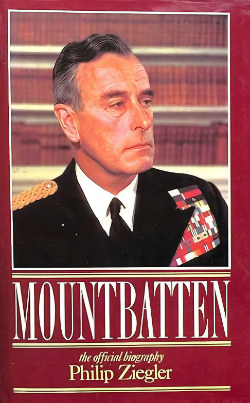
That said, it was an interesting read for a few reasons. Firstly, I learned a lot about Mountbatten and English history, and when I finally arrived at the chapter about India, it was like watching the same movie from a different angle.
I could even remember some passages of Freedom at Midnight when Gandhi met with Mountbatten, and I could picture the scene in my mind as if it were filmed with a 360° camera.
Do Androids Dream of Electric Sheep?
Blade Runner is one of my favorite movies of all time, and, for that reason, the book Do Androids Dream of Electric Sheep? has been in my TBR pile for a very long time. It finally happened during a trip to Oxford, where I probably spent too much money on books. No, I take it back. As long as you read them, there is no such thing as spending too much money on books.
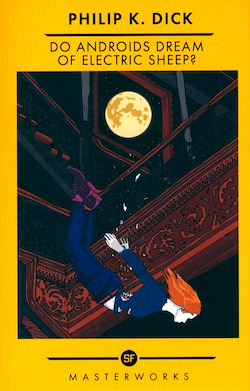
Anyway, it is a quick read that I completed by the end of the trip, yet it proved to be highly enjoyable. The essence of what I watched many years ago was there, but it felt like traveling to a parallel universe where there was another version of the movie.
And that brought up many thoughts about another passion of mine, moviemaking. While I was reading, I kept thinking about the director’s process of deciding to change this or that aspect of the movie.
The Most Important Journey
A few days ago, I finally got to the part of this book I wanted to read about: India’s independence. I first learned of Mountbatten many years ago, when I was preparing myself for a trip to India and reading everything I could about the subcontinent.
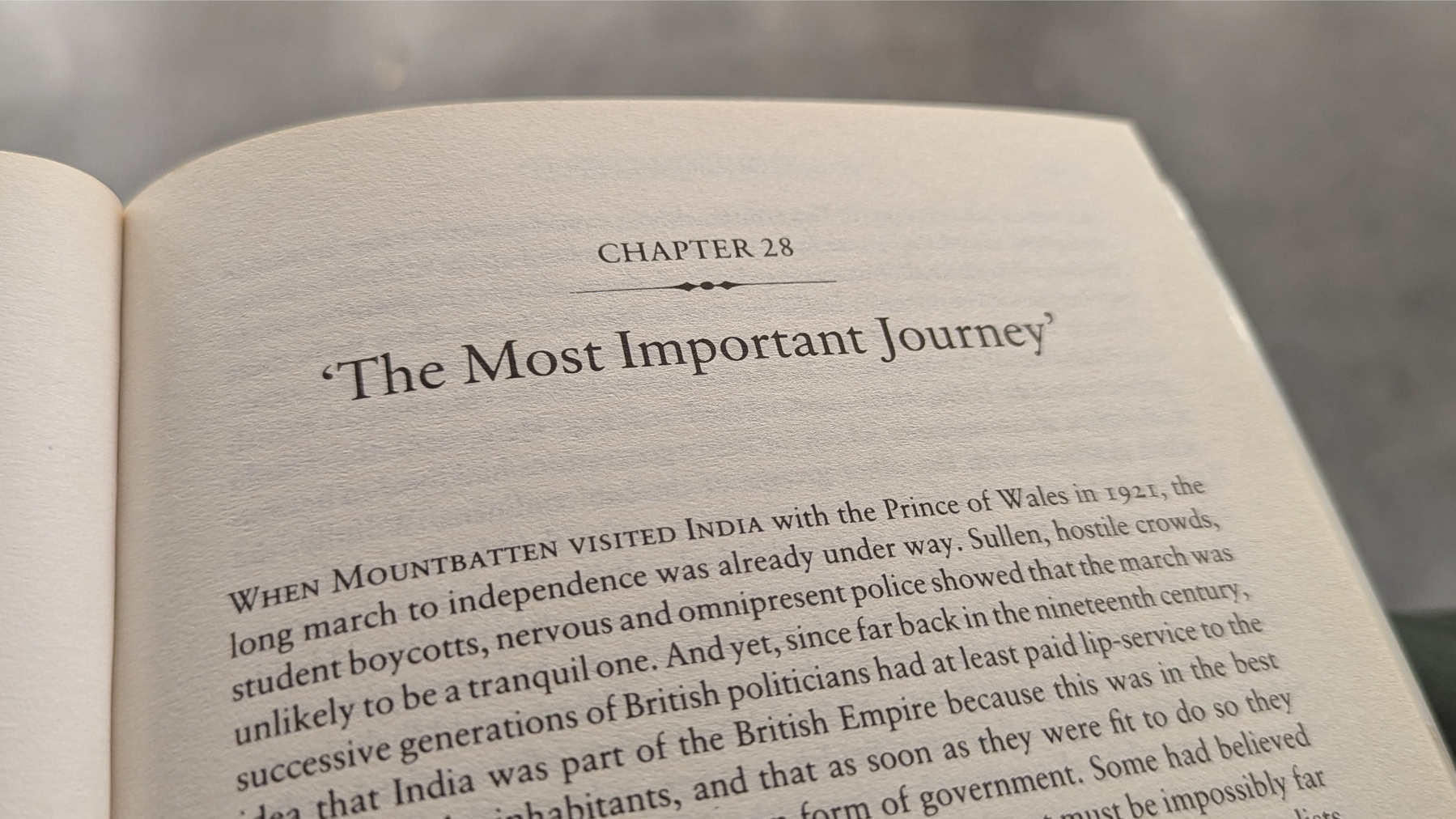
I eventually came across Freedom at Midnight, which is a brilliant book centering on Gandhi’s biography and perspective. Mountbatten’s biography, which is the one I’m reading now, is, of course, based on his perspective. And this is what makes reading both books so unique.
This is a history with other important players, and I hope to learn more about their perspective in the future. For now, I am simply fascinated by what I’m learning from this book, enjoying each new page more than the previous one. To be honest, this moment is what kept me reading it. Even though it is a well-written book, it is also massive, and each chapter has so much detail.
In any case, although it was an almost boring read so far, looking back, I now find it invaluable to have learned more about Mountbatten’s personal life and professional trajectory before his role in India’s independence. But his participation in the country’s history was definitely what I was looking forward to since the day I started reading this book.
I have always been fascinated by history, which ultimately led me to pursue a postgraduate degree in international affairs. But what you may not know is that after that I began a master’s degree program in history. Unfortunately, life had other plans for me, and I never finished it.
I’m a huge fan of history because the paths we took as a society in the past explain a lot about the world we live in today. Which also makes me sad because it seems like as a society we often take too long to learn. It appears to be so difficult for our species. We frequently start over again after moving forward.
Anyway, I feel that after this book, it is time to take a break and invest more time into another passion of mine, cognitive psychology. I don’t know if that will make me less sad about humanity, though.
Reading e-books is much more comfortable than paper books
Recently, I realized why I find reading e-books to be much more comfortable than paper books. I thought it was something related to weight, shape, size, etc., but it turns out to be something that makes more sense.
Reading the electronic version of Mountbatten has proven to be considerably more comfortable and fluid, and that’s what prompted me to start exploring this situation. The pages in the real book are pretty big, and the book itself is super heavy, but none of that is related to the act of reading.
The customizable font and line spacing make all the difference. I noticed this the other day while I was flipping through a book at a bookstore. My eyes were uncomfortable with the lines. Picking up a random book off the shelf confirmed my theory. Again, the lines seemed to be too close together.
Maybe I got used to spacing the lines, maybe my eyes are getting worse, whatever the reason is, it doesn’t really matter. What matters is how simple it is to fix this when reading e-books 😉
Have a lovely week, Vlad.
PS. If you’re looking for some inspiration for books to read, you can always check out my library.
677 pages to go...
677 pages to go… Every journey starts with the first step, right? Are you looking for inspiration for your next literary adventure? Check my library to see what I am currently reading and some of the books I have read.
Coincidentally, or should I say incidentally 🤔, a few days ago I started writing my next book.

Prisoners of Geography
The first book of 2024. I still prefer eBooks for a multitude of reasons, but bookstores and used bookstores are still the kings of discoverability. I found Prisoners of Geography by Tim Marshall in a random store during my last trip and had already read half of it flying back home.
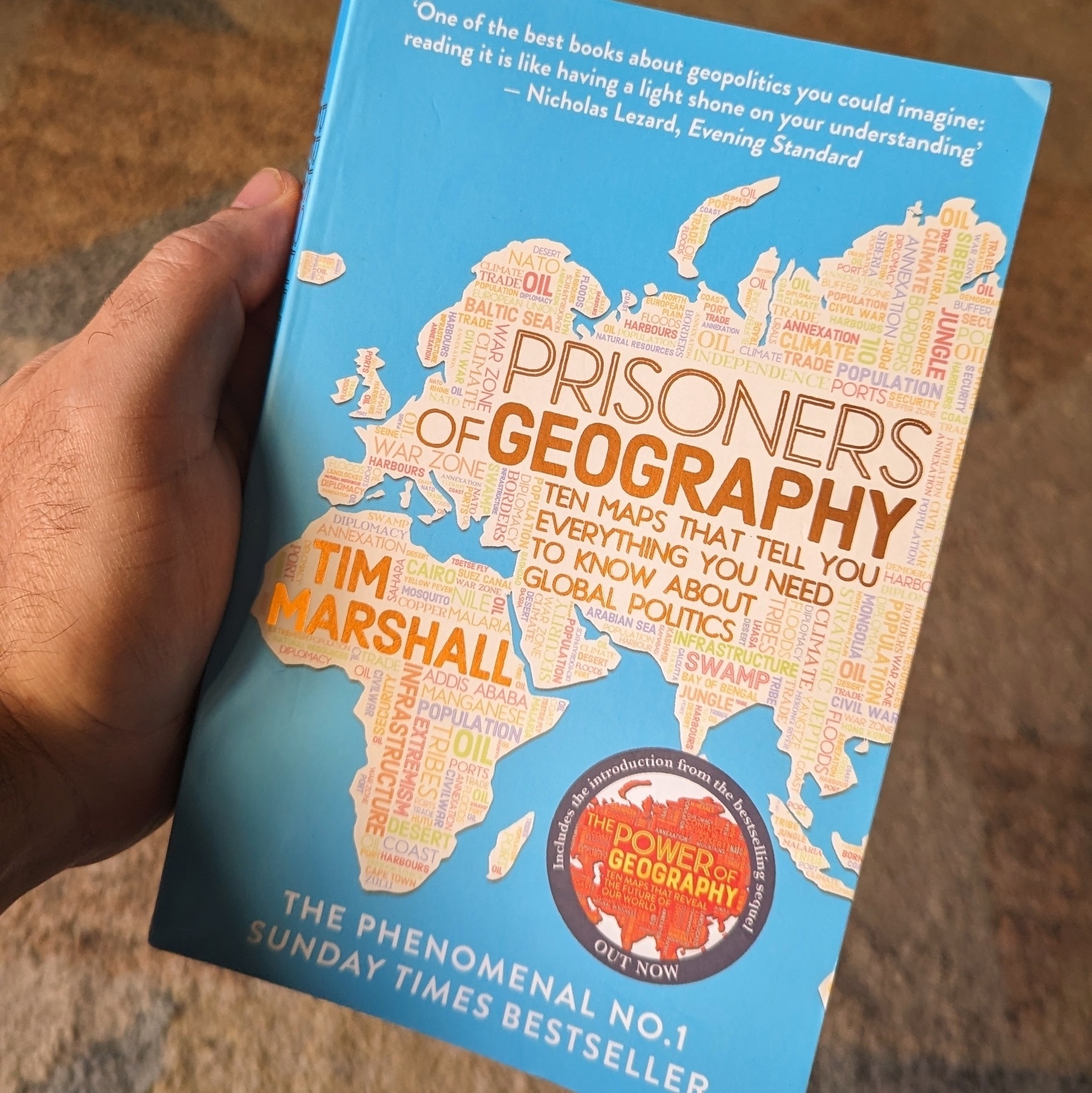
Back to the Source: Revisiting Weaving the Web by Tim Berners-Lee
To give you a sense of how long ago I read the book Weaving the Web, I still had a Walkman lying around, and since I accidentally picked it up in cassette format, that’s how I “read” it. Yes, you got that right: cassette tape.
Regardless, I remember hearing Tim Berners-Lee explain that his original concept for the Web was a more interactive knowledge-building and linking process. I don’t recall his exact words, but this was the idea. At least, this is what my memory tells me. Which reminds me of another great book, Memory Illusion by Dr. Julia Shaw. But I digress.
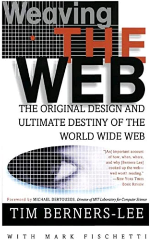
That stuck with me for a long time because, for many years, all we had were websites with static pages. No interaction at all. It was more like a one-way knowledge flow, but it was a start. Then came the blogs and the comments, but it still didn’t feel like what he meant in his book. When social media started gaining popularity, I thought to myself, “Maybe this is it.” Well, I was wrong. We ended up with a lot of “islands” and too much misinformation.
I don’t think a Web based on the ActivityPub protocol is precisely what he meant, but connecting all these online “islands” feels to me more like his vision. Another step in that direction, if you will.
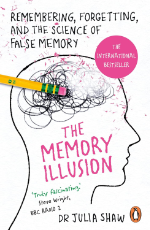
Anyway, it’s been too long since I read it, and I’ll use the last week of 2023 to revisit it. It’s a great book! Dr. Shaw’s book is also excellent, but it’s more recent, and I have already read it twice.
That’s it for this one. I hope you have a lovely day!